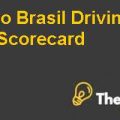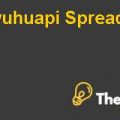Yum! Brands Inc: A corporate Do – over Case Solution
Evaluation of Problem
Initially, Yum had appeared with the spin-off of the three brands in which five were ofPepsiCo. With the acquisition of Pizza Hut, Taco Bell in the 1970s, afterwards KFC in 1986, PepsiCo was worth$4.7 billion by 1997. All of the three acquisitions appeared as Tricon Global Restaurants. Moreover, it got hold of John Silver’s and A&W. However, this Tricon appeared with the name of Yum to New York.
Due to multiple branding, Yum appeared to have intensive labor force. Moreover, the customers were satisfied by the services, which is why the aim of the management was to focus on its employees.
Analysis of Yum
Value proposition of Yum’s Customers
After the company’s spin-off, the company started growing rapidly. Due to the differentiation, it offers two brands in which customers prefer the multi-branding over single branding,and that is because the customers get convenience and options both under one option.
Yum’s chains Delivering Value Proposition
Yum expanded with its multiple branding. It was announced by Dedrick, the president of KFC, that there would be no difference among core competencies of all of the brands.
Service model of Yum
PepsiCo’s management did not involve into formulating the targets for sales. However, each of its business has been operating with the target of generating more profit.In addition to this, each brand was separately dealing with its staffs in headquarters.
PepsiCo strived for the development of a strong culture. Therefore, it recruited the responsible, motivated and excellent performance candidates.
Yum developed Unified Foodservice Purchasing Cooperative (UFPC) in order to control the buying power of Yum. However, its competitive advantage is that it is the biggest buyer of one of its food service ingredients, which is cheese. The benefit of the organization is that it provides the discussion of the different brands at one table and as a result,the brands discuss the general issues.
It was a collective team strategy that Novak formulated to build relationship among franchises. Novak with the president of KFC, Dedrick, formulated the model of servant–leadership.
It entailed
- Shutting off the non–profitable franchise and opening another franchise in place of each.
- For staffs at Pizza Hut and KFC the lunch time had been extended
- There was more emphasis on the businesses that had the fastest market growth.
This model was helpful to engage the employees of KFC. The purpose of this model was to let the people dothings along with providing all of their needs(Smith, 2005).
Three models were generated for the new launches from which the third model was formulated. The third scenario was complex,however it created a unique approach of operations. The idea was to deal with critical activities in headquarters, for example, marketing, restaurants. However, non-critical activities such as purchasing had to be done in franchises. The motive of the model was to generate and increase the growth of the business, as well as to provide functional expertise in order to reduce the cost.
After the launch, Yum bench marked the top industries. Novak distributed different documents among the franchises. These documents were for explaining employees principles for guidance that named as “Our Finding Truths”.Moreover, the second document was for explaining workplace norms named as “How we work together”.
As the organizational value has to explain to the council, Novak and Dedrick announced that the core values of all the restaurants were on equality basis...................
This is just a sample partial case solution. Please place the order on the website to order your own originally done case solution.











